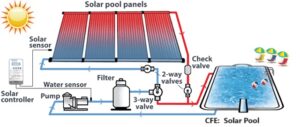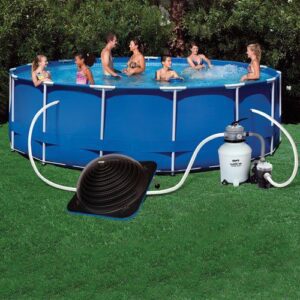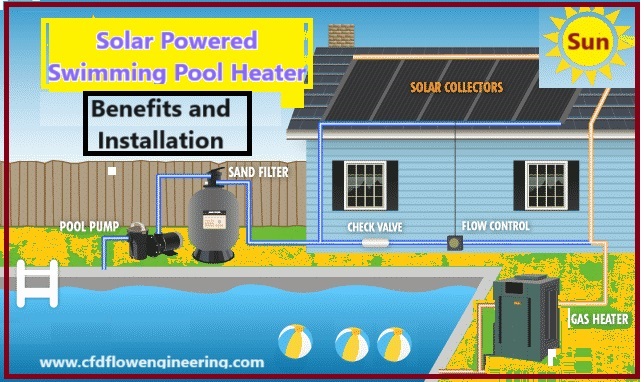Table of Contents
ToggleHarnessing Solar Power for Swimming Pool
- Harnessing solar power for a swimming pool heater involves utilizing sunlight to warm the pool water through a system of solar collectors.
- This eco-friendly approach taps into renewable energy, reducing dependence on traditional heating methods that may involve electricity or gas.
- Here’s a step-by-step explanation of how solar power is harnessed for a swimming pool heater:

Components of a Solar Pool Heater
- Solar Collectors:
- These are panels or tubes that collect sunlight and convert it into heat.
- Typically installed on the roof or on the ground near the pool.
- Pump:
- A pump circulates pool water through the solar collectors.
- Filter:
- A filter removes debris from the pool water before it reaches the solar collectors.
- Flow Control Valve:
- This valve controls the flow of water through the solar collectors, allowing you to regulate the temperature.
- Return Valve:
- Sends heated water back to the pool.

How to Select Solar-Powered Swimming Pool
- Installing a solar-powered swimming pool heater can be a great investment, providing a sustainable and cost-efficient way to extend your swimming season.
- A solar-powered swimming pool heater consists of several key components that work together to harness sunlight and heat your pool water.
- Here are the essential parts of a solar pool heating system
Location:
- The effectiveness of a solar pool heater depends on your geographical location and the amount of sunlight received.
- The location of the solar pool heater is decided by your geographical location.
- Areas with ample sunlight will benefit more from these systems.
System Size:
- The size of the solar collector system should be appropriate for the size of your pool.
- It’s crucial to match the size of the solar collector system with the dimensions of your pool.
- Consulting with professionals can help determine the appropriate system size for optimal performance.
Installation:
- Proper installation is crucial for optimal performance.
- It’s often recommended to consult with professionals for installation.
- Proper installation is key to the efficiency of solar pool heaters.
- While these systems are relatively straightforward, consulting with professionals ensures that they are installed correctly, maximizing their effectiveness.
Weather Conditions:
- Solar pool heaters may be less effective during cloudy or rainy days.
- Solar pool heaters rely on sunlight, so their efficiency may be affected during cloudy or rainy days.
- Consider having a backup heating system for periods when sunlight is limited.
Backup System:
- Consider having a backup pool heating system for periods of low sunlight.
- While solar pool heaters offer long-term cost savings, it’s essential to consider the initial investment. Calculate the potential savings over time to determine the return on investment for your specific situation
Conclusion:
- Solar-powered swimming pool heaters stand out as champions of sustainability due to low maintenance.
- Their ability to harness the sun’s energy not only warms your pool but also warms the hearts of environmentally conscious pool owners.
- As technology continues to advance, these systems are likely to become even more efficient and accessible, making solar pool heaters a shining example of how we can align leisure with environmental responsibility.
Post Views: 784
